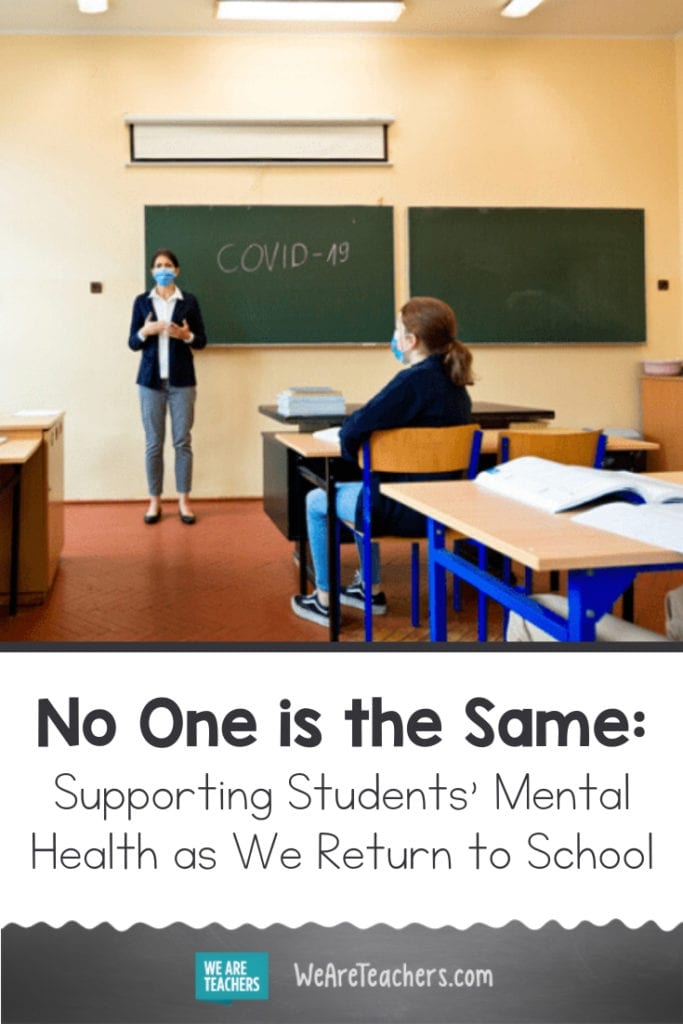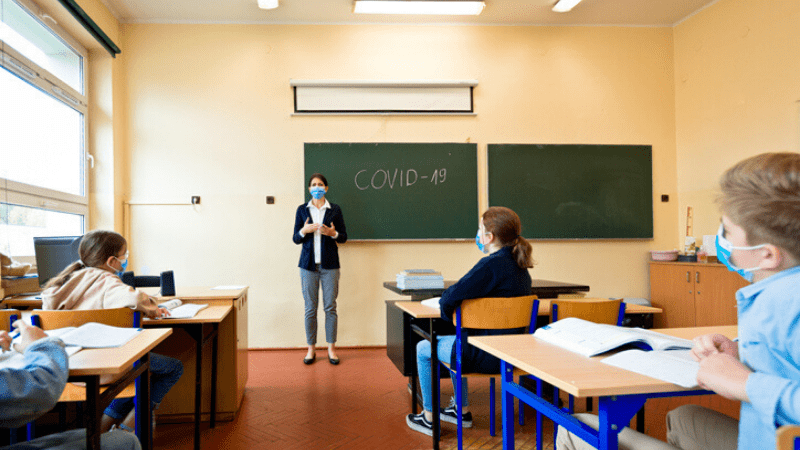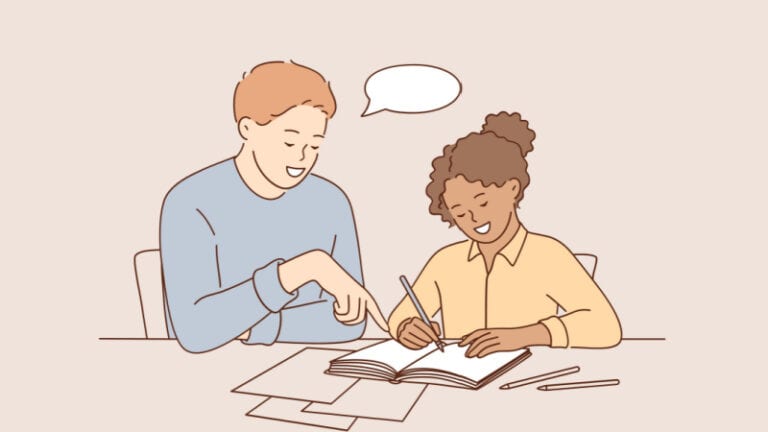We encounter the metrics constantly—new cases, eliminated jobs, more deaths. But as teachers, we worry about COVID-19 fallout that is far less calculable. We know that trauma often impacts the young most profoundly. And it’s hard to know how to support students’ mental health as we return to school.
School closures and social distancing have intensified preexisting struggles like food insecurity, depression, and abuse. For some students, the threat of illness looms somewhere “out there” … but others are actively grieving lost family members or friends. Many kids have encountered parental job loss, financial strain, family issues, and personal turmoil—all within the four walls of their homes. As teachers, we know we can’t simply launch into academics as if things are unchanged. No one is the same, and our kids need us. The good news is, even though we might not be trained counselors, there are many things teachers can do to support returning students during COVID-19.
Talk and then talk some more
Healing from trauma happens within relationships. And as we know, relationships are fostered by communication. Don’t expect kids to open up about their feelings right away. Use the early days of back to school to establish rapport and learn about hobbies, family, and interests. At the same time, don’t be afraid to “go there” when it feels right to do so. The changes and struggles we’ve experienced are on everybody’s minds, and pretending they don’t exist will do students a disservice. Ask open-ended questions about various aspects of kids’ “new normal.” Check out these writing prompts and turn them into conversations. Consider forming smaller discussion groups to focus on what recent events have made students think about or feel—not just how they spent their unexpected staycations. Allow students to ask questions and answer them as well as you can—but don’t be afraid to admit you don’t know something. Share some of your own feelings about all that has happened, too. It helps children to see an adult’s experience and watch them navigate emotions in a healthy way.
[contextly_auto_sidebar]
Help them create a record
Art is a powerful way to process trauma. Whether via writing, painting, or some other medium, many have found healing through expressing experiences creatively. Elementary students can create a simple illustrated journal with each page dedicated to something about their lives that has changed. Older students can write letters to a future generation, explaining the events of the past six months, including personal reflections on what they’ve learned and what they miss. Or students can create an abstract painting that captures the emotions of this time.
Teach them the power of their thoughts
The “truths” we turn over in our brains have a great impact on the way we feel about our lives. Help students become aware of what they are thinking about and teach them to rewrite hopeless scripts that over-generalize or project the worst. “Things will always be this way” can turn into “things will eventually get better.” “There’s nothing I can do” can become “decisions I make to keep myself and others safe can make a big impact.” This is not about blind optimism; it’s about identifying and replacing inaccurate thoughts with true thoughts that move us to a healthier place.
Model self-care
For many students (and adults), the idea of self-care isn’t familiar. Model what it looks like to be dialed into your own needs. Explain that when you’re feeling overwhelmed, it means you need a break. Brainstorm ways to reset, from a FaceTime chat with a friend to a walk outside to a bubble bath. For many, self-care can look like limiting exposure to media, whether that means switching off the TV or unfollowing newsfeeds on social media. Even young children should be empowered to ask for a ban on coronavirus talk at the dinner table when they need it (this happened at my house!).
Look for silver linings
COVID-19 is tragic, period. But are there small things students can point to as upsides? Did someone learn a new skill? Make a special family memory? Get a pet? It can also be helpful to reflect on the heroism we’ve seen. Initiate a conversation about frontline workers who show selflessness in the face of danger. Talk about the ways communities have come together or individuals who have made sacrifices. Helping students see good around them will help them create a narrative of events that isn’t only negative.
Encourage them to take action
There is no lift like the feeling that you’re making a difference. Find out if any local retirement communities or assisted living facilities are matching seniors with young penpals. Contact a local hospital to find out how kids can write thank-you notes to frontline workers. Or initiate a class fundraiser for the Red Cross or some other organization.
Make future plans
We all need to remember that although life may not be exactly the same as it once was, we will not be in crisis forever. Talk with students about where they’d like to go when they can travel again. Ask them to describe their ideal day when everything is reopened. Dream together about life on the other side of the coronavirus—it’s healthy to know that the status quo is not here to stay.
Champion routine and be consistent
Without warning, COVID-19 stole structure and predictability, and kids are still feeling the effects. Let students know early on exactly what to expect in your classroom, whether it’s in-person, virtual, or some combination. Try to replicate normal classroom routines as much as possible, even when it feels awkward. Ask students to find a consistent place at home for distance learning. Encourage them to maintain a regular bedtime and morning schedule. And then make sure that you are consistent. Start class and grade assignments when you say you will. Keep your promises. Your students need a steady presence more than ever. No one will ever be the same—but thanks to you, students can feel much safer.
What are your ideas for supporting students this fall? Share in the comments.
Plus, check out these five articles and videos on student trauma.


